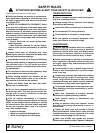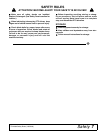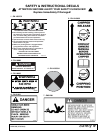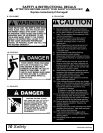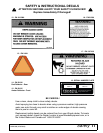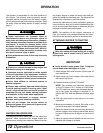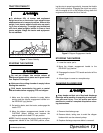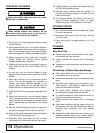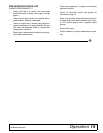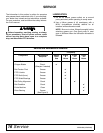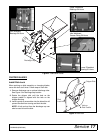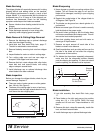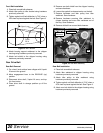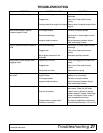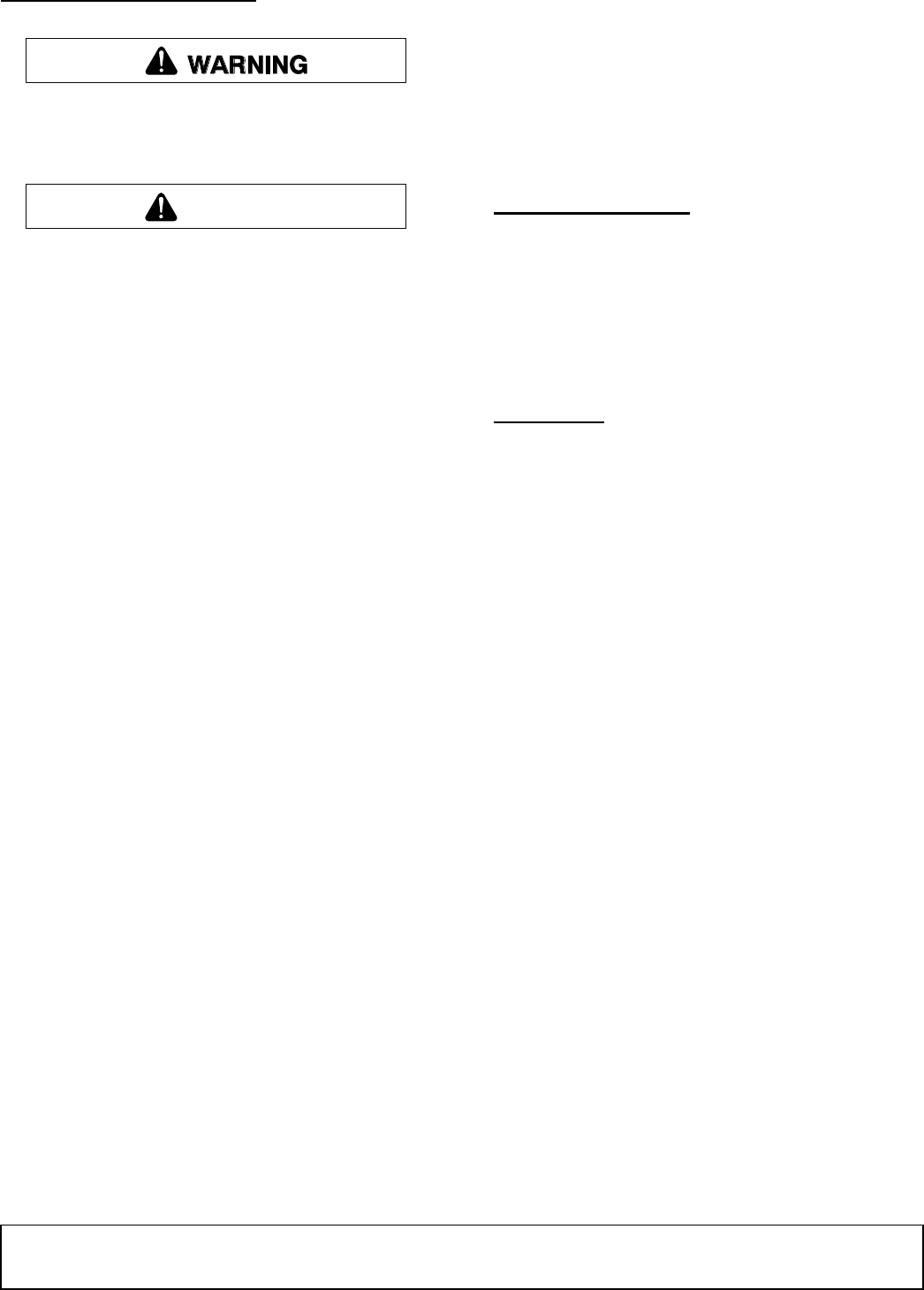
14 Operation
MAN0458 (9/23/2005)
OPERATING TECHNIQUE
Make sure debris does not blow into traffic,
parked cars, or pedestrians.
When feeding material into machine, do not
allow metal, rocks, bottles, cans, or any other for-
eign material to be fed into the machine.
1. Run chipper at full operating speed before starting
to chop material.
2. Select limbs that are up to 4-1/2 inches in diameter.
Trim side branches that cannot be bent enough to
feed into the chipper hopper. Hold small diameter
branches together in a bundle and feed in together.
3. Make sure pieces of metal, rocks, cans, and other
foreign objects are removed before feeding
chipable material into the machine.
4. Feed brush from the side of the chipper hopper to
avoid being hit by the brush moving into the
chipper.
5. Do not lean over the chipper hopper to push
objects into the chipper. Use a push stick or brush
paddle.
6. Never use a shovel or fork to feed brush into the
chute. They can be chipped, are expensive to
replace, and cause extensive damage to the
chipper. Metal pieces can be ejected from the
chipper hopper and cause serious injury or death.
7. Never feed brush into the chipper hopper with your
feet.
8. Place limb, butt end first, into the chipper hopper
until it contacts the chipper blades. The actual feed
rate of the limb into the chipper will depend on the
type of material fed and sharpness of the cutting
blades.
9. Stop the material feeding and allow the engine to
recover if the engine slows to where it may stall.
10. Remove the branch and rotate it before reinserting
it into the chute if the chipper jams.
11. Alternately insert and retract the limb or insert
continuously at a rate that will not stall the engine.
12. Chipping dead, dry material will create heat and
dull the chipping blades quickly.
13. Alternate green material with dry material to
lubricate the chipping blades for longer life and
better performance.
14. The chipping blades will become dull and will
require periodic sharpening. Refer to Blade
Sharpening, page 18 for sharpening instructions.
STORING CHIPPER
1. On a hard, level surface lower chipper with 3-point
lift arms to the ground.
2. Disconnect drive shaft, 3-point lift arms, and top
link from tractor.
3. Place drive shaft in storage position up off the
ground.
CLEANING
After Each Use
● Remove large debris such as clumps of dirt, grass,
crop residue, etc. from machine.
● Inspect machine and replace worn or damaged
parts.
● Replace any safety decals that are missing or not
readable.
Periodically or Before Extended Storage
● Clean large debris such as clumps of dirt, grass,
crop residue, etc. from machine.
● Remove the remainder using a low-pressure water
spray.
● Be careful when spraying near scratched or torn
safety decals or near edges of decals as water
spray can peel decal off surface.
● Be careful when spraying near chipped or
scratched paint as water spray can lift paint.
● If a pressure washer is used, follow the advice of
the pressure washer manufacturer.
● Inspect machine and replace worn or damaged
parts.
● Sand down scratches and the edges of areas of
missing paint and coat with Woods spray paint of
matching color (purchase from your Woods
dealer).
● Replace any safety decals that are missing or not
readable (supplied free by your Woods dealer).
See Safety Decals section for location drawing.
CAUTION



